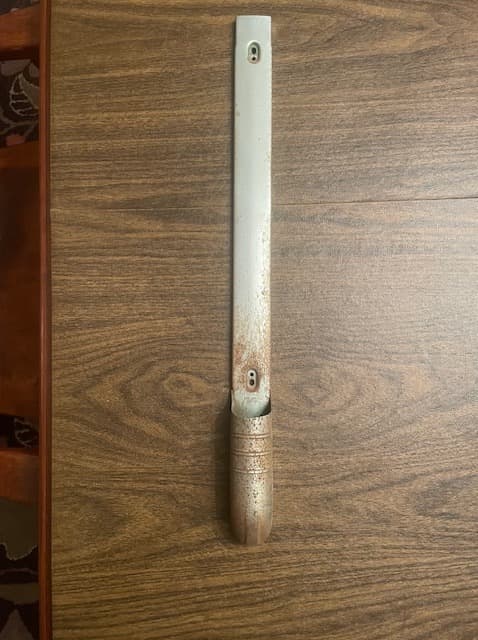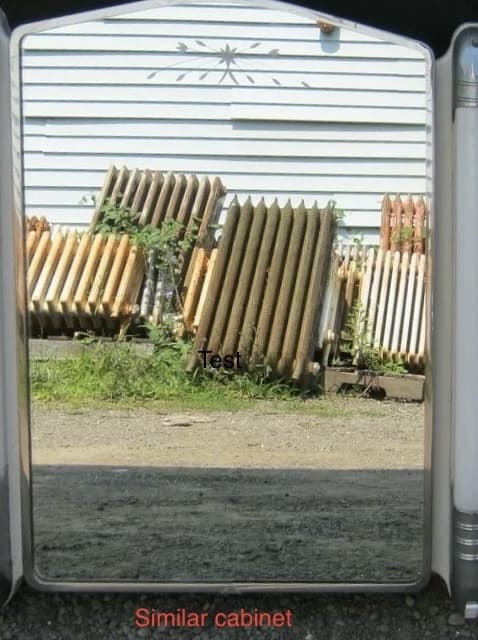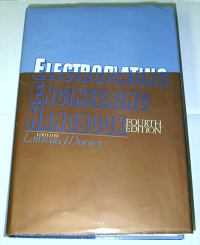
Curated with aloha by
Ted Mooney, P.E. RET

The authoritative public forum
for Metal Finishing 1989-2025

Thread 617/80
Preparing Part for Replating with Chrome
Quickstart:
Readers who are not familiar with chrome plating might like to see our Intro to Chrome Plating.
Q. I am restoring a metal medicine cabinet that is around 80 years old and have a couple of questions about getting it re-plated. I know nothing about the process.
It has several parts that were, I believe, chrome plated. I'm not sure what the base metal is. On the back of the piece in the photo I can see a copper color. I am assuming that was a copper plating step before the final plating. The parts to be plated have varying amounts of surface rust. I know the plating shop will clean and prep the parts. If I removed most of the rust before bringing them to be plated, would that reduce the cost of the job since the shop would spend less time preparing the parts?
If so, what is the best way to remove the rust without causing more problems?
Thanks
Been trying to figure that out for 50 years - Hudson, New Hampshire
November 25, 2024
publicly reply to George Pagliarulo
A. Hi George.
Since you are seeing rust, the cabinet is made of steel -- because brass and aluminum don't rust.
There are two aspects to the rust problem. The first is the removal of the rust, which probably involves nothing more than a fairly quick dip in hydrochloric acid. The second is a much bigger problem: if there is pitting, plating will not fill those pits (at least not without a lot of human intervention like brazing and grinding or, for small pits, heavy copper plating followed by skillful but tedious "mush buffing" to force copper down into the pits).
"Chrome plating" of this type involves copper plating followed by nickel plating followed by chrome plating. If you feel that you can remove all of the existing chrome, nickel, and copper that would be great ... because chemical removal must be done by the plating shop before replating -- but you might find it to not be possible especially on inside corners.
Cleaning and derusting is relatively easy for any plating shop, involving only dips into such tanks as a soak cleaner, electrocleaner, rinse, and acid dip -- so I'm not sure you should bother trying to do the cleaning and derusting by hand. However, you could scrub in all down with pumice, which would let you know how bad the pitting is, and what copper, nickel, and chrome easily come off. Plating shops will occasionally do this pumice cleaning on especially dirty parts or just as a test of the effectiveness of their dip cleaning line.
Pumice cleaning involves filling a bucket with a strong solution of powdered pumice and warm water, plus a little bit of detergent like Spic and Span
⇦ this on
eBay or
Amazon [affil links]
... then scrubbing the cabinet with a tampico scrub brush
⇦ this on
eBay or
Amazon [affil links] (and possibly a stiff toothbrush in tight corners.
Luck & Regards,

Ted Mooney, P.E. RET
Striving to live Aloha
finishing.com - Pine Beach, New Jersey
publicly reply to Ted Mooney
Q. Thanks, here's a photo of the cabinet. Before I do anything I have to see if I can get bulbs the right size to rewire it.


- Hudson New Hampshire
November 26, 2024
publicly reply to George Pagliarulo
Q, A, or Comment on THIS thread -or- Start a NEW Thread

